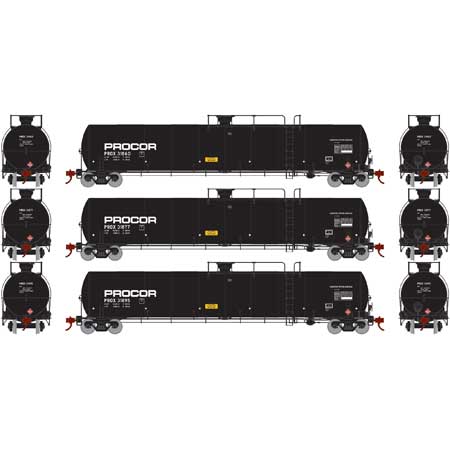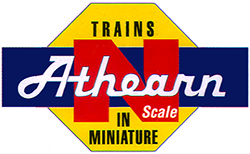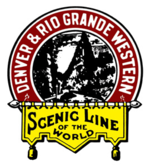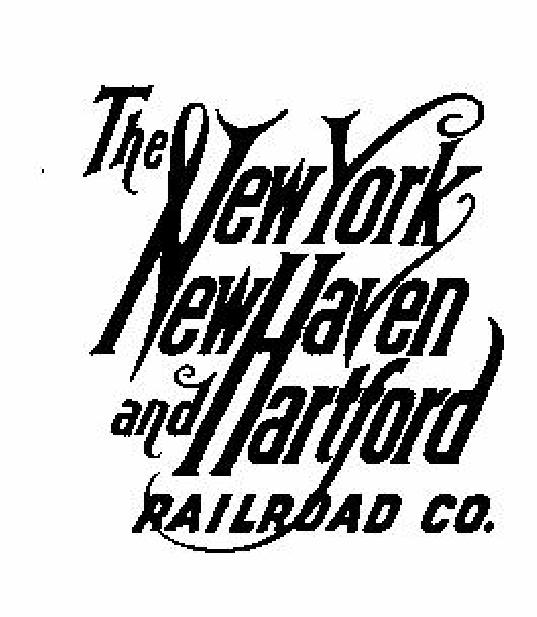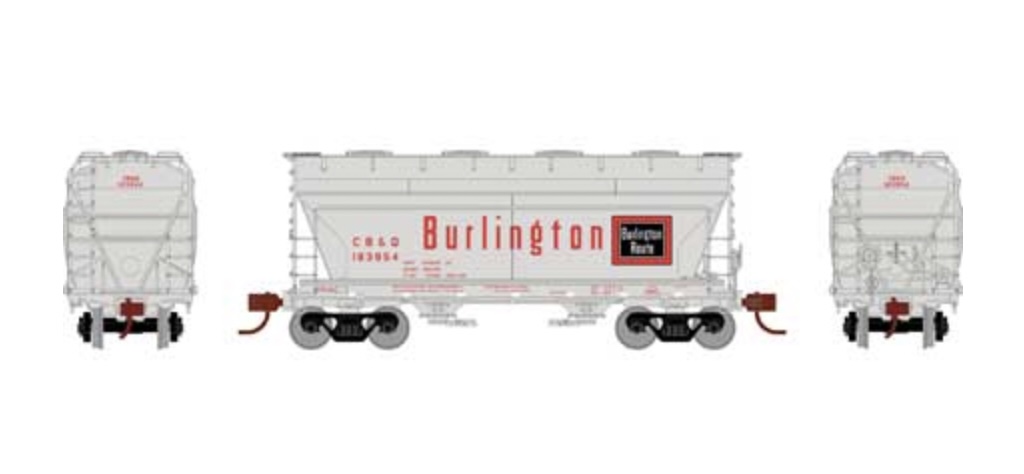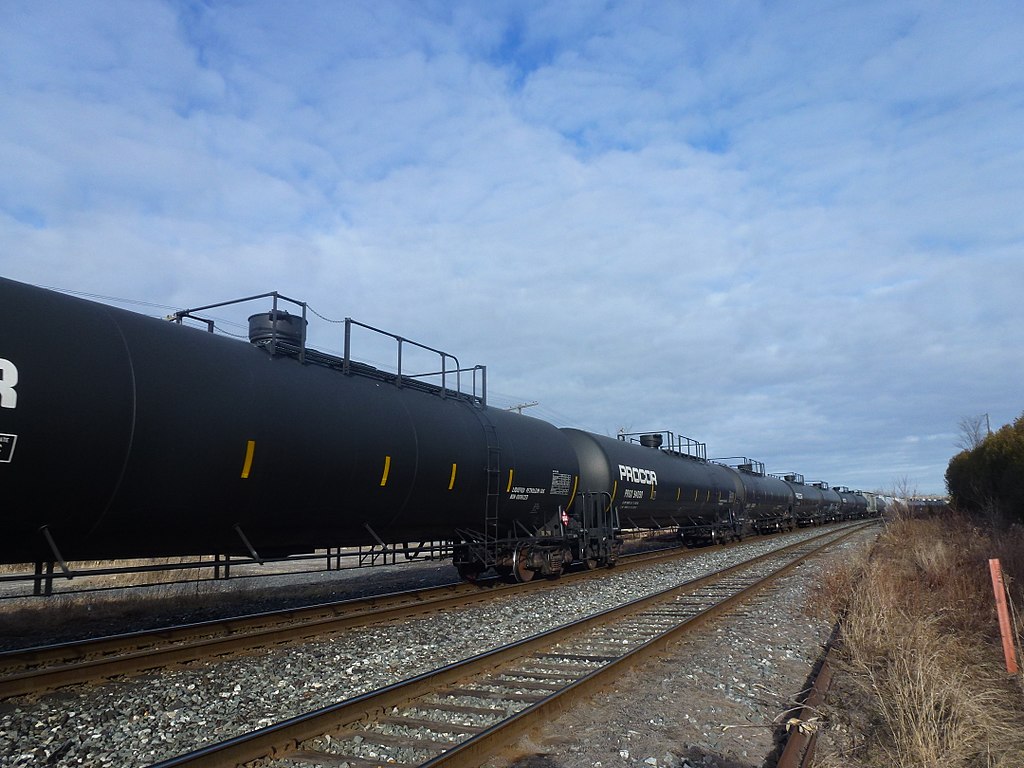Prototype History: Liquefied Petroleum Gas (LPG) (also called Autogas) is a liquefied mixture of propane and butane. It is an inevitable by-product of the crude oil refining process and of natural gas processing. In natural gas processing, the natural gas is cleaned off heavy hydrocarbons such as propane and butane before distribution. About 60% of global LP Gas supply comes from natural gas processing. In crude oil refining, LPG is a by-product of the refining process. LPG is gaseous at room temperature and changes to a liquid when compressed at moderate pressure or chilled. The chemical composition of LPG can vary, but is usually made up of butane and propane with a 30-99% propane mix.
The 33,900 gallon tank car is one of the largest standard tank cars used today. While Liquefied Petroleum Gas (LPG) and Anhydrous Ammonia are the two most common commodities, they are also used to transport butadiene, isoprene and gasoline. These cars can be seen regularly in mixed manifest freight trains throughout North America. They travel singly or in large blocks between producers and distributors.
The 33,900 gallon tank car is one of the largest standard tank cars used today. While Liquefied Petroleum Gas (LPG) and Anhydrous Ammonia are the two most common commodities, they are also used to transport butadiene, isoprene and gasoline. These cars can be seen regularly in mixed manifest freight trains throughout North America. They travel singly or in large blocks between producers and distributors.
Road Name History: 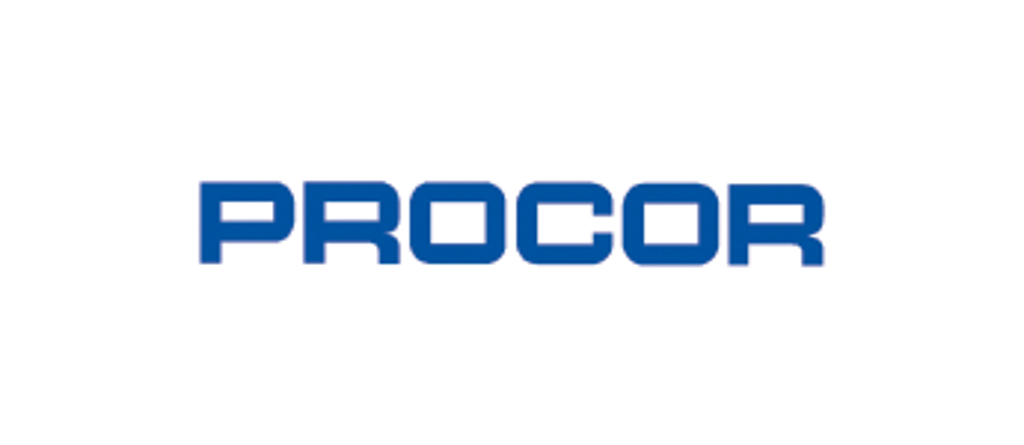 Procor is a Canadian company producing railway shipping cars. It is Canada's largest private rail car rental fleet, with more than 21,000 conventional and special-purpose tank and freight cars. Linked to Sparling Tank Car of Toronto, Procor was founded in 1952 as Products Tank Line Limited and became an affiliate of US-based Union Tank Car Company. Within a few years they had become a major player in Canadian tank car operations through the acquisition of the Transit Co./Imperial Oil fleet in 1955, along with a number of smaller operators such as Canadian Industries Ltd. circa late 1956. The company, which shortened its name to Procor in 1962, is headquartered in Oakville, Ontario.
Procor is a Canadian company producing railway shipping cars. It is Canada's largest private rail car rental fleet, with more than 21,000 conventional and special-purpose tank and freight cars. Linked to Sparling Tank Car of Toronto, Procor was founded in 1952 as Products Tank Line Limited and became an affiliate of US-based Union Tank Car Company. Within a few years they had become a major player in Canadian tank car operations through the acquisition of the Transit Co./Imperial Oil fleet in 1955, along with a number of smaller operators such as Canadian Industries Ltd. circa late 1956. The company, which shortened its name to Procor in 1962, is headquartered in Oakville, Ontario.

Brand/Importer Information: Athearn's history began in 1938, when its founder-to-be, Irvin Athearn, started an elaborate O scale layout in his mother's house. After placing an ad selling the layout, and receiving much response to it, Irv decided that selling model railroads would be a good living. He sold train products out of his mother's house through most of the 1940s. After becoming a full-time retailer in 1946, Irv opened a separate facility in Hawthorne, California in 1948, and that same year he branched into HO scale models for the first time.
Athearn acquired the Globe Models product line and improved upon it, introducing a comprehensive array of locomotive, passenger and freight car models. Improvements included all-wheel drive and electrical contact. One innovation was the "Hi-Fi" drive mechanism, employing small rubber bands to transfer motion from the motor spindle to the axles. Another was the double-ended ring magnet motor, which permitted easy connection to all-wheel-drive assemblies. Athearn was also able to incorporate flywheels into double-ended drives.
The company produced a model of the Boston & Maine P4 class Pacific steam locomotive which incorporated a cast zinc alloy base and thermoplastic resin superstructure. It had a worm drive and all power pickup was through the bipolar trucks that carried the tender. This item was discontinued after the Wilson motor was no longer available, and was not redesigned for a more technologically advanced motor.
Athearn's car fleet included shorter-than-scale interpretations of passenger cars of Southern Pacific and Atchison, Topeka & Santa Fe Railroad prototypes. The company also offered a variety of scale-length freight cars with sprung and equalized trucks. The cars could be obtained in simple kit form, or ready-to-run in windowed display boxes. The comprehensive scope of the product line contributed to the popularity of HO as a model railroad scale, due to the ready availability of items and their low cost.
Irv Athearn died in 1991. New owners took control in 1994, but continued to follow Athearn's commitment to high-quality products at reasonable prices. Athearn was bought in 2004 by Horizon Hobby. Athearn was then moved from its facility in Compton to a new facility in Carson, California. In mid-2009, all remaining US production was moved to China and warehousing moved to parent Horizon Hobby. Sales and product development was relocated to a smaller facility in Long Beach, California.
Read more on Wikipedia and Athearn website.
Athearn acquired the Globe Models product line and improved upon it, introducing a comprehensive array of locomotive, passenger and freight car models. Improvements included all-wheel drive and electrical contact. One innovation was the "Hi-Fi" drive mechanism, employing small rubber bands to transfer motion from the motor spindle to the axles. Another was the double-ended ring magnet motor, which permitted easy connection to all-wheel-drive assemblies. Athearn was also able to incorporate flywheels into double-ended drives.
The company produced a model of the Boston & Maine P4 class Pacific steam locomotive which incorporated a cast zinc alloy base and thermoplastic resin superstructure. It had a worm drive and all power pickup was through the bipolar trucks that carried the tender. This item was discontinued after the Wilson motor was no longer available, and was not redesigned for a more technologically advanced motor.
Athearn's car fleet included shorter-than-scale interpretations of passenger cars of Southern Pacific and Atchison, Topeka & Santa Fe Railroad prototypes. The company also offered a variety of scale-length freight cars with sprung and equalized trucks. The cars could be obtained in simple kit form, or ready-to-run in windowed display boxes. The comprehensive scope of the product line contributed to the popularity of HO as a model railroad scale, due to the ready availability of items and their low cost.
Irv Athearn died in 1991. New owners took control in 1994, but continued to follow Athearn's commitment to high-quality products at reasonable prices. Athearn was bought in 2004 by Horizon Hobby. Athearn was then moved from its facility in Compton to a new facility in Carson, California. In mid-2009, all remaining US production was moved to China and warehousing moved to parent Horizon Hobby. Sales and product development was relocated to a smaller facility in Long Beach, California.
Read more on Wikipedia and Athearn website.
Item created by: CNW400 on 2020-11-13 13:23:19
Last edited by: CNW400 on 2020-11-13 13:23:51
If you see errors or missing data in this entry, please feel free to log in and edit it. Anyone with a Gmail account can log in instantly.
Last edited by: CNW400 on 2020-11-13 13:23:51
If you see errors or missing data in this entry, please feel free to log in and edit it. Anyone with a Gmail account can log in instantly.


